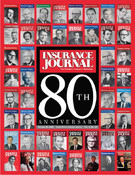For those who regularly travel the nations’ freeways, a report finding that inadequate following distance, or tailgating, is the most common error made by drivers likely comes as no surprise. However, Smith System Driver Improvement Institute Inc., an Arlington, Texas-based company that provides professional driver training, has completed a study showing what most of us already suspected is in fact true.
According to Smith System, which was founded in 1952, its study is culled from 50 years of training more than 100,000 drivers. It showed that most motorists follow between one and two seconds behind the vehicle in front of them. The company recommends a four second following distance for today’s traffic conditions.
“Inadequate following distance is commonly called tailgating or following too closely,” noted Smith System president Tony Douglas in a published statement. “It is the cause of many accidents, including most rear-end collisions.”
In its analysis, Smith System found that many drivers are still relying on a two second following distance recommended in early driver training courses. However, the company noted that this following distance has been abandoned by most state DMVs as well as the Department of Transportation. The two second recommendation was derived from testing the stopping distance and reaction time of drivers under ideal conditions, including the road, vehicle and driver, and was considered a minimum.
“These ideal conditions rarely exist,” Douglas continued. “This formula also restricts the driver’s ability to survey the complete traffic picture. Within two seconds or less, drivers don’t have time to take their eyes off the vehicle in front to identify risks further ahead, to the sides or behind. This limited information often leads to hasty reactions that expose drivers to more risk.”
Drivers often cite the misconception that a larger following distance will encourage other drivers to cut in front of them, putting them behind schedule. However, according to Smith System, the root of this concern is more emotional than logical. As drivers move in and out of lanes, the net effect balances out and does not impact a driver’s schedule.
For example, driver A cuts in front of driver B and maintains a following distance of two seconds, with another one half second added for the vehicle’s length. This will add two and one half seconds to driver B’s schedule. If this occurred as much as 40 times in a day’s driving, it would only add 100 seconds to the total day. In most cases, however, these drivers change lanes and have no impact.
Smith System recommends at least a four second following distance. This is measured by gauging when the rear of vehicle ahead passes a fixed object, such as a telephone pole or an overpass. There should be at least four seconds before your vehicle passes that same fixed point. This distance should be increased in poor road or weather conditions or when driving heavy equipment.
Smith System provides complete information on this topic in the company’s video “Following Distance, Resolving the Debate,” available by contacting Smith System at (800) 777-7648.
Was this article valuable?
Here are more articles you may enjoy.


 Deere Retreats From Diversity Measures After Online Attacks
Deere Retreats From Diversity Measures After Online Attacks  Soccer Officials Arrested After Melee That Damaged Hard Rock Stadium in Miami
Soccer Officials Arrested After Melee That Damaged Hard Rock Stadium in Miami  What Disruptions Have Been Reported After the Global Tech Outage?
What Disruptions Have Been Reported After the Global Tech Outage?  What Happened to Reinsurance ‘Class of 2023’? Hard Market Defies Age-Old Patterns.
What Happened to Reinsurance ‘Class of 2023’? Hard Market Defies Age-Old Patterns. 


